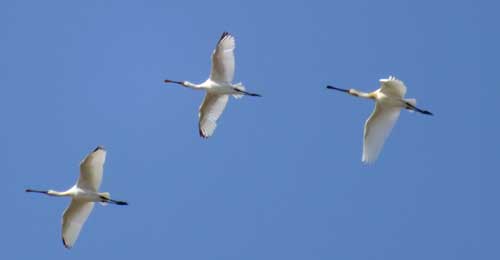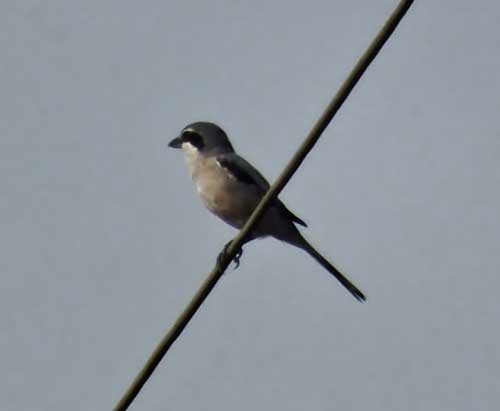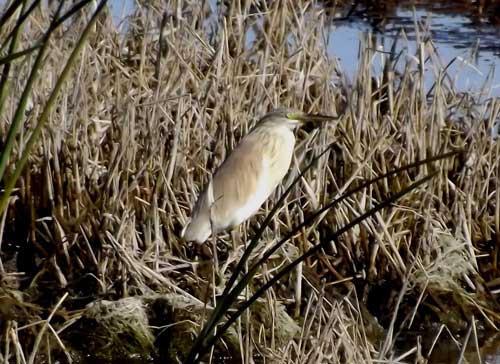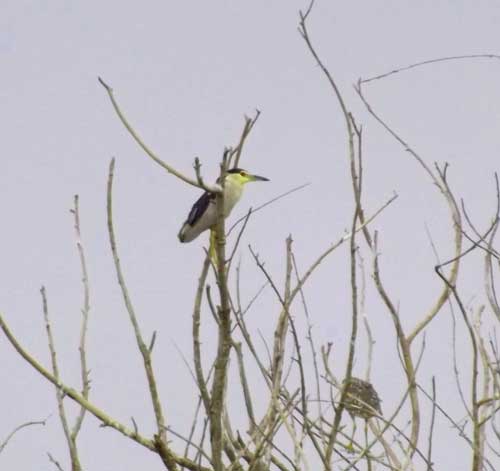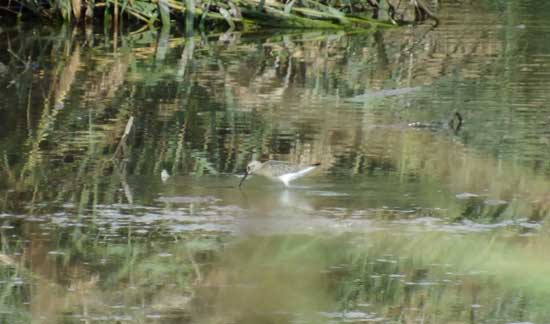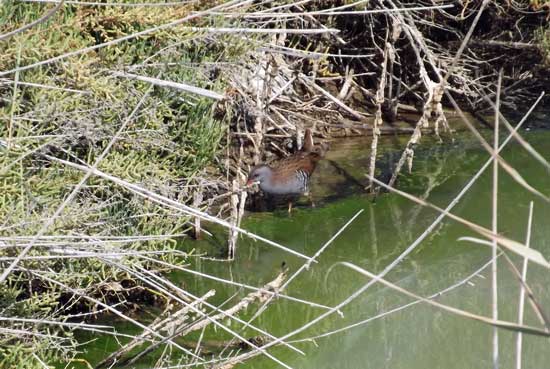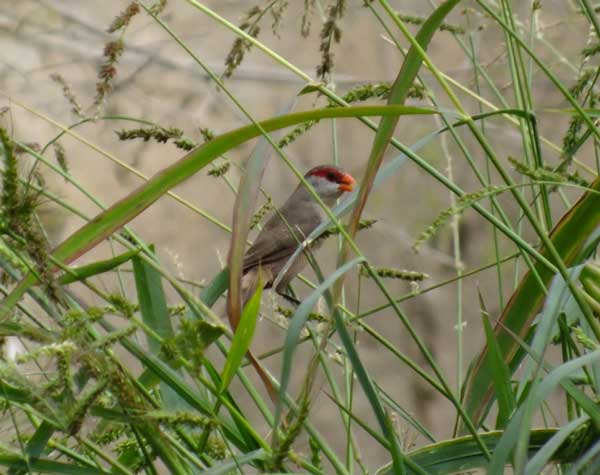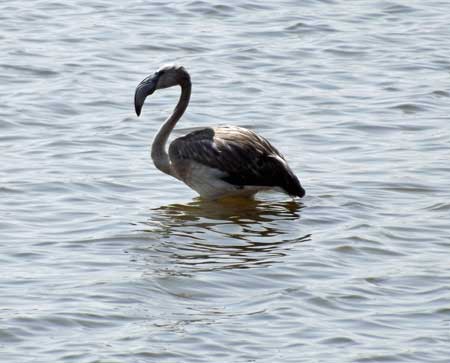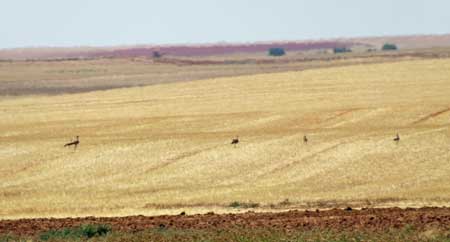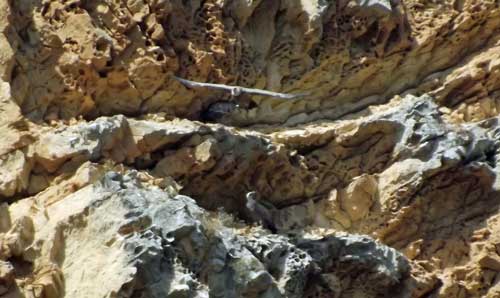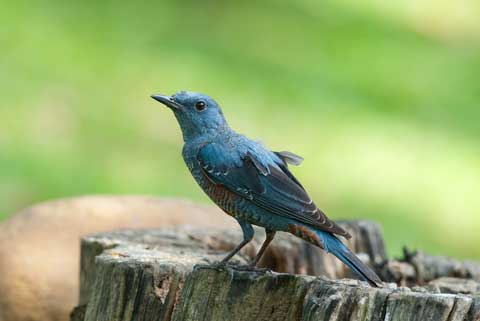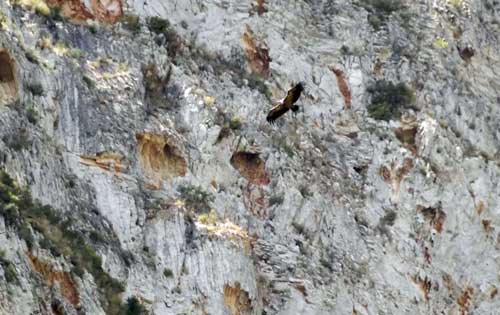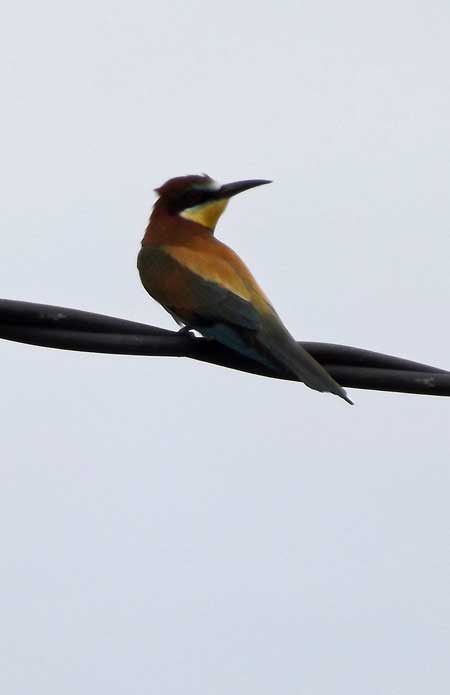Last Friday was one of those days when work really
didn´t feel like work. Despite being a fairly long day, the weather
was perfect, the birds were great and the company of my clients for the
day was excellent. Both were scientists who had spent the week at a
conference in Valencia and wanted to escape for a days birding. Tony, a
very experienced, accomplished but refreshingly “down to earth” birder
had travelled extensively and had a superb knowledge of the birds of
Australia in particular. His own website can be seen at
tonykeenebirds.co.uk Jason, a nature lover and birder was also an experienced wildlife photographer.
Having met at their hotel in the city of Valencia, we made the
journey west, out of the city and up onto the plains of Castilla de la
Mancha. Our first stop was at a vantage point that I usually use as it
affords far-ranging views across the steppe.
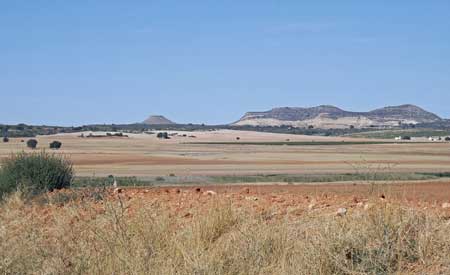 |
| The plains of Castilla de la Mancha |
Within just a few moments we´d seen Skylark and Crested Lark in the
fields, Spotless Starlings on some farm buildings and a Buzzard on a
pylon. The first of many of the day´s Wheatears sat up on a rock,
showing well. Then one of the days highlights – suddenly a small group
of sizeable birds took flight from some rocky ground beneath us, flew
across the road and settled in a field. The swiftness of their flight
and the heat haze were initially confusing, but having focused the scope
onto them it was obvious that we were looking at Stone Curlews – a
great start to the day.
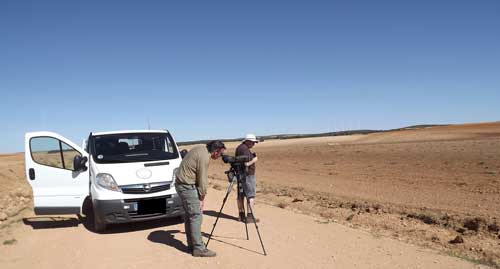
We then drove across the plains on rough tracks in search of another
of the day´s target birds, the Great Bustard. Twenty minutes of
searching revealed nothing but Skylarks, Kestrels and Crows so we
decided to head for another area, but first stopped off at one of the
area´s lagoons. Scanning the water, we saw a few Greater Flamingoes,
Shoveler, Little Grebe and the usual Coots and Grey Herons. House
Martins and Barn Swallows were feeding over the water but careful
observation picked out a juvenile Red Rumped Swallow in amongst them. A
Sparrowhawk appeared from over the hill, and settled in a nearby tree,
flushing out a small flock of Spotless Starlings. Enjoying the shade and
generally peaceful surroundings, further scanning around revealed a few
Little Ringed Plover feeding on the shoreline. We then returned to the
van and set out once more across the steppe in search of other local
specialities. We´d been on the move for a matter of minutes when a
raptor caught our attention. It was obliging enough to circle above us
for long enough to allow great views of this superb bird of prey – a Red
Kite. The pale grey thin underwing bar and the less forked shape of the
tail suggested a young bird.
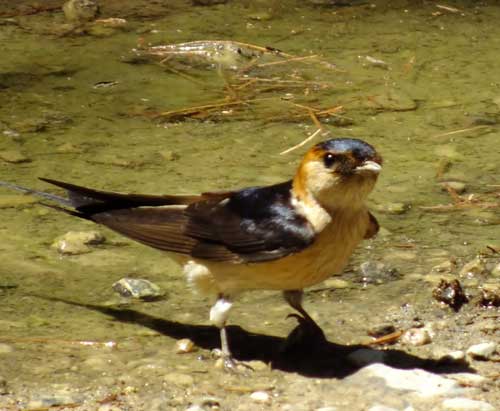 |
| Red Rumped Swallow |
Then it was back to the trails that cross the seemingly endless
plains. Something ahead caught our attention – it was indeed a group of
male Great Bustards, their sheer size evident, even at fairly long
distance. Then yet another highlight, Tony found a Great Spotted Cuckoo
perched on a wire. Although it didn´t linger for long enough for us to
get the scope on it, its key ID features were clear.
Further searching of the plains revealed yet more Great Bustard, a few
passing Crag Martins and we were also treated to good views of an
Iberian Grey Shrike. We then stopped at a place of previous sightings of
Great Spotted Cuckoo. Although there were none around, we were
fortunate enough to enjoy good views of yet more Stone Curlew, the big
eye and yellow eye-ring showing really well.
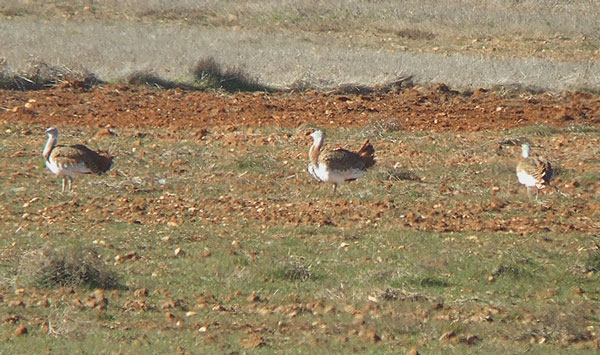 |
| Great Bustards |
The final stop of the day was at another of the area´s lagoons, where
we saw many more Greater Flamingo, a Common Sandpiper, Black Necked
Grebe and Marsh Harrier. We stopped at a local village to grab a coffee
before making the journey back to Valencia. We´d seen some superb birds
and had been fortunate to enjoy perfect weather conditions. Thanks to
Tony and Jason for a great day out.
The day´s species list comprised…
Barn Swallow, Black Necked Grebe, Black Winged Stilt, Buzzard, Collared
Dove, Common Coot, Common Sandpiper, Crag Martin, Crested Lark, Crow,
Great Bustard, Great Spotted Cuckoo, Great Tit, Greater Flamingo, Grey
Heron, House Martin, House Sparrow, Iberian Grey Shrike, Kestrel, Little
Grebe, Little Ringed Plover, Mallard, Marsh Harrier, Red Kite, Red
Rumped Swallow, Shoveler, Skylark, Sparrowhawk, Spotless Starling, Stone
Curlew, Wheatear.

Written by David Warrington
Bird Watching Guide at
Valencia Birding.
